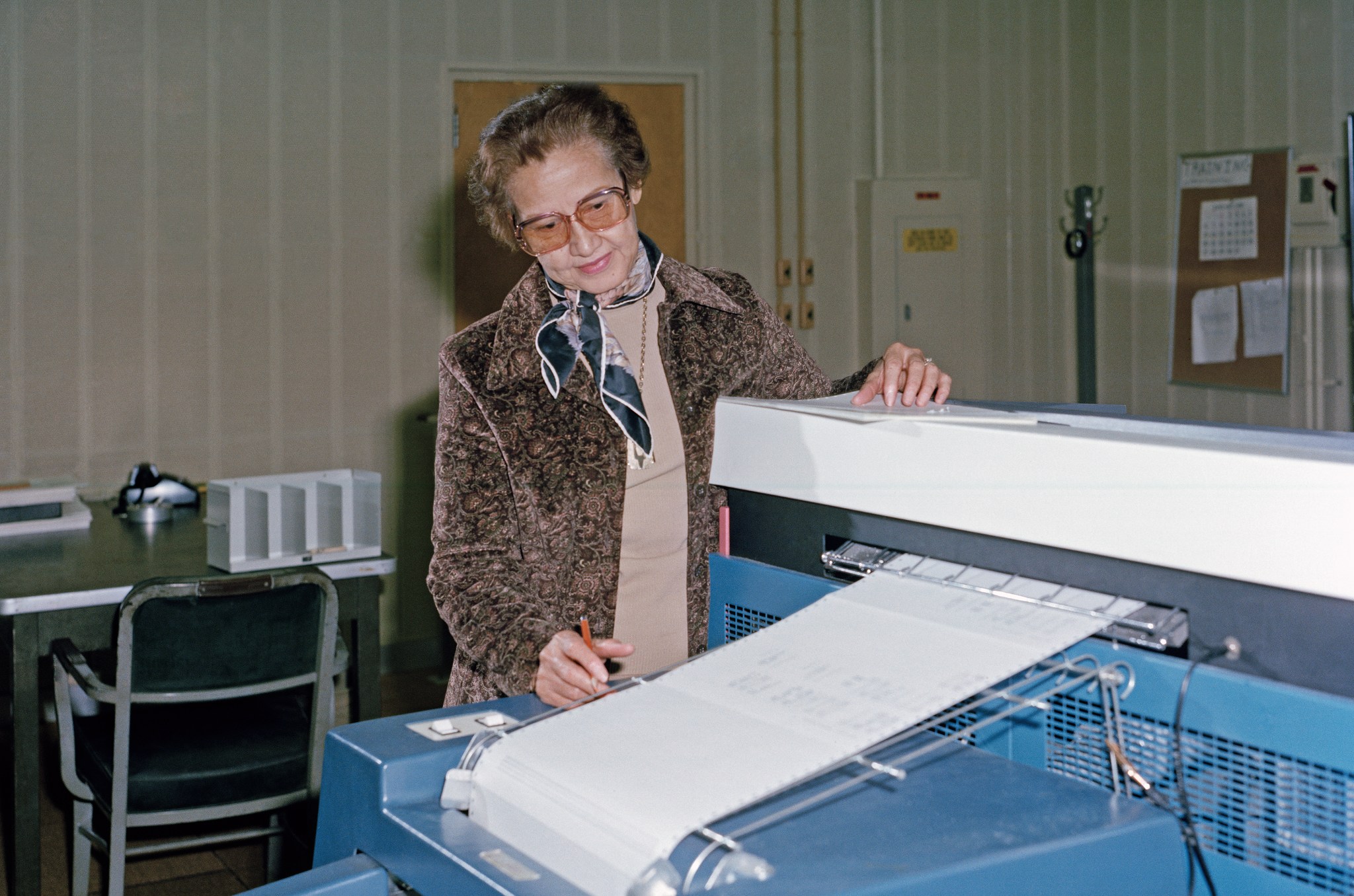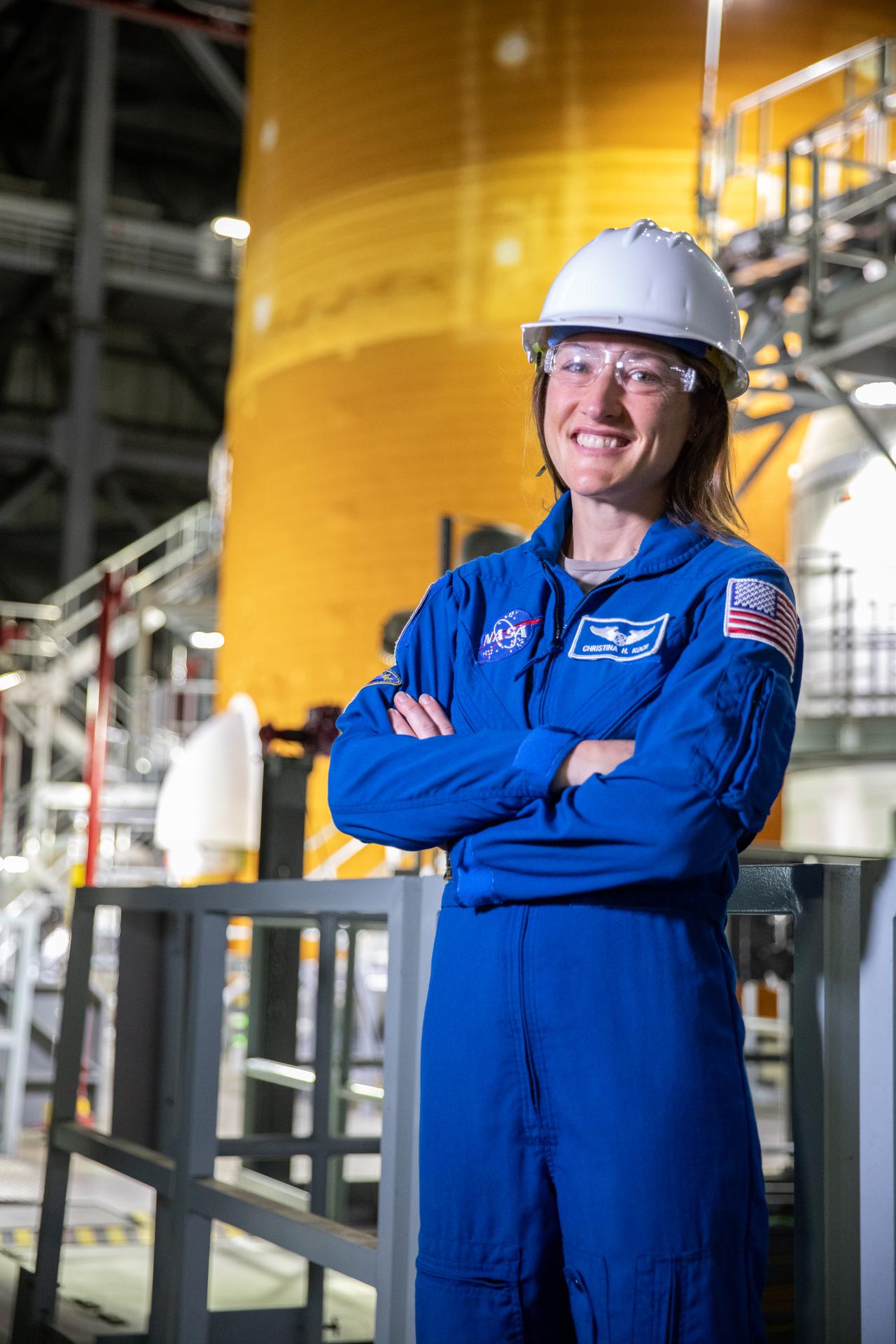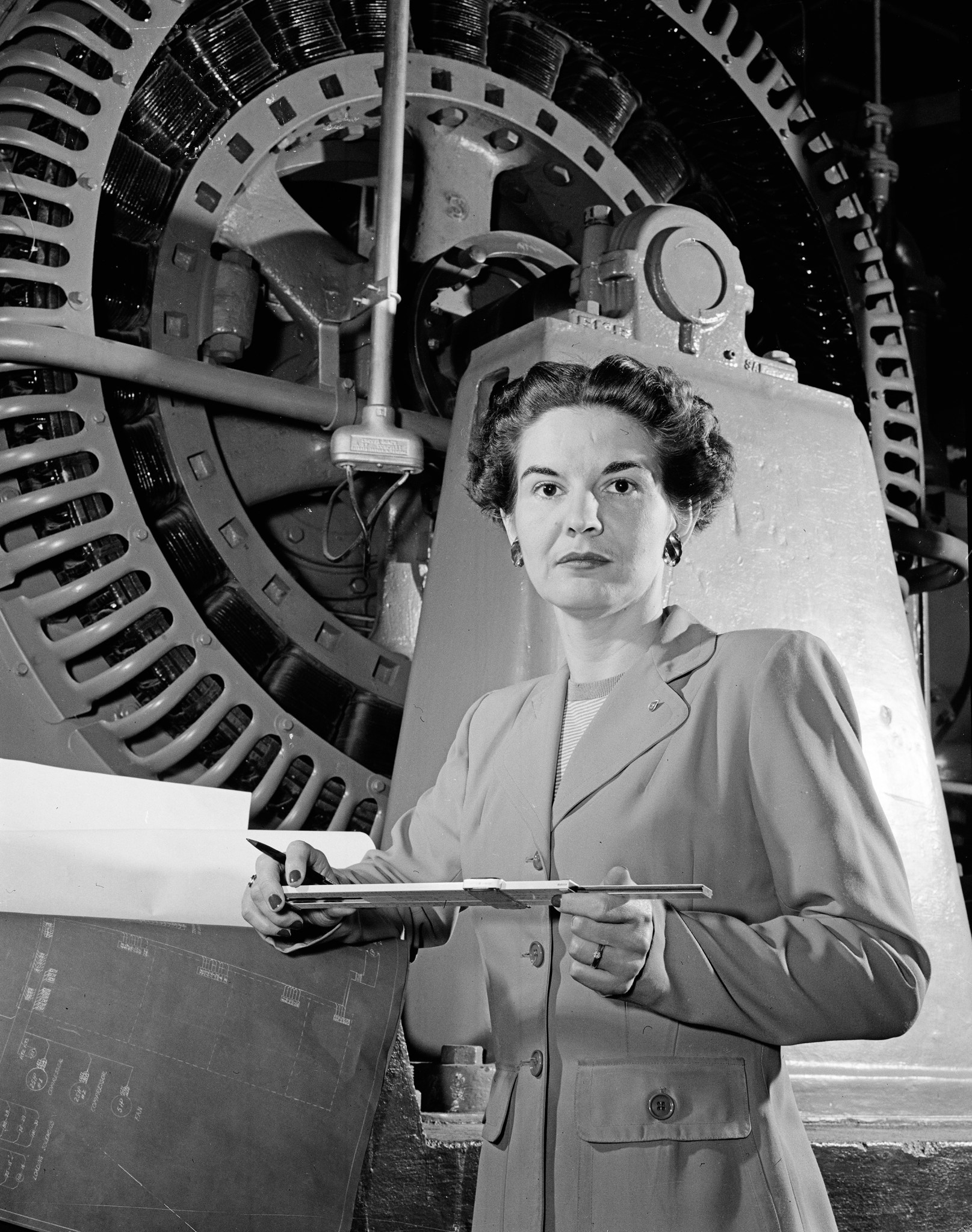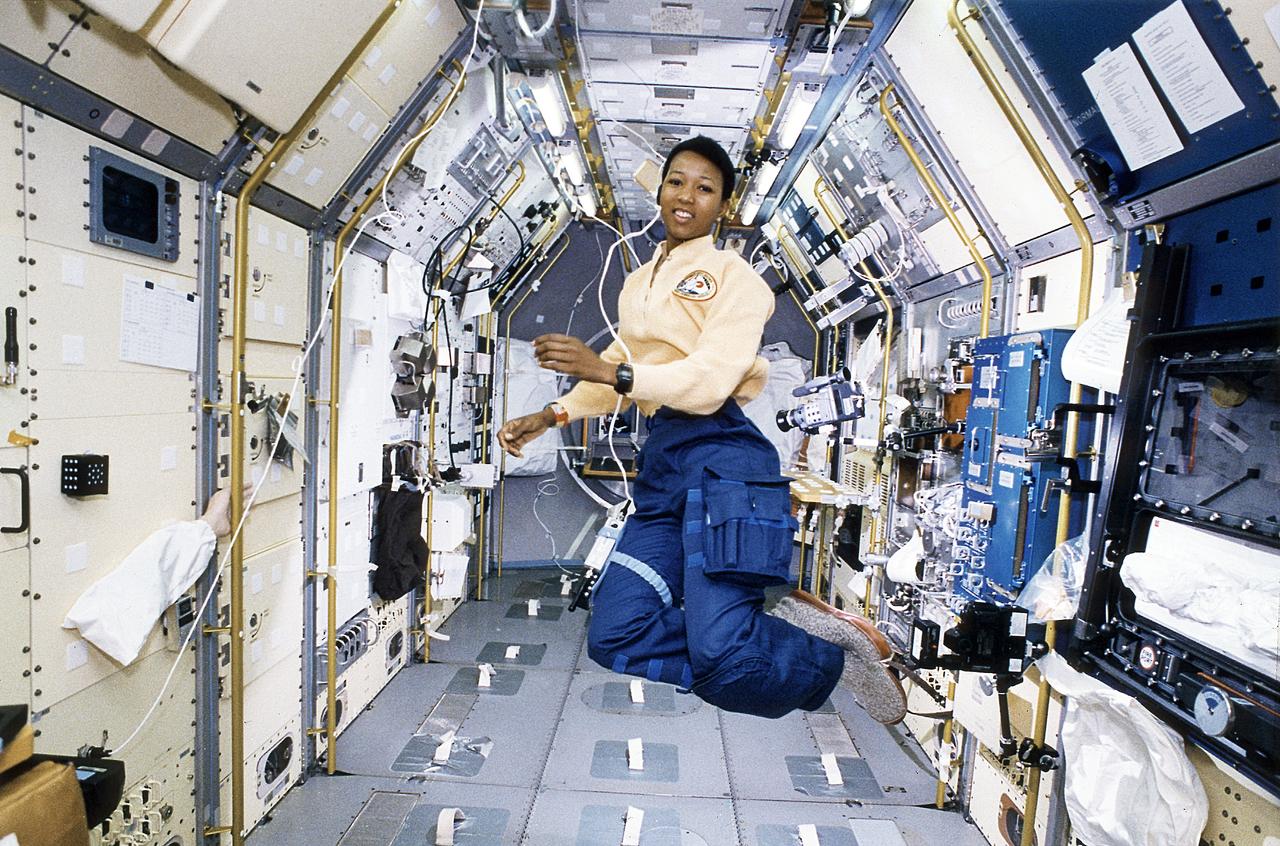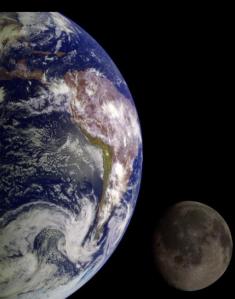Katherine Johnson
NASA engineer Katherine Johnson surpassed expectations and overcame obstacles throughout her career. In 1953 she began working at the National Advisory Committee for Aeronautics (NACA) Langley Laboratory, which at the time was NASA’s all-Black West Area Computing program. Through this position, Johnson was launched into challenging positions and the work she contributed to the agency lives on today.
“Katherine Johnson got to be in the room where it all happened. Despite many barriers, she continued to persevere until she was seen for her worth,” Commercial Lunar Payload Services intern Malaya Moon said. “Having her as an inspiration, I found my purpose in STEM.”
Throughout her career, Johnson worked in a variety of positions including the Maneuver Loads Branch of the Flight Research Division. She also played a key role in John Glenn’s Friendship 7 Mission. In 2015, Johnson was awarded the Presidential Medal of Freedom for being a pioneering legacy. Her career was filled with ‘firsts’ and her legacy will continue to inspire women for generations to come.
Second-year Ph.D. student and pathways engineering intern, Shelita Hall also credits her passion to pursue science to Johnson’s legacy.
“Learning about Katherine Johnson has allowed me to overcome imposter syndrome, giving me confidence regarding my academic abilities during my internship experiences at NASA.”
As Moon and Hall embark on their own NASA journeys and find their places within the agency, they continue to look to Johnson as a role model.
“Seeing someone that looked like me defying the odds led me to focus on STEM and ultimately led me to land my dream job; working at NASA,” Moon said.
Christina Koch
Women of all backgrounds and areas of expertise contribute to the advancement and success of the projects across the NASA agency.
Selected as an astronaut candidate in 2013, Christina Koch is a key part of NASA’s Artemis program, in which NASA plans to land the first woman and person of color on the moon. Not only has Koch completed an all women space walk with fellow female astronaut Jessica Meir, but she also holds the record for the longest single space flight by a woman.
Inspired by Koch, second-year graduate student and NASA public affairs intern, Jaden Jennings always dreamed of one day working with the incredible women of NASA despite her unconventional STEM role in communications.
“If there is something you feel called to do, just know that the calling is there for a reason, not by accident,” Jennings said. “As a 24-year-old master’s student, I felt as though it was too late for me to intern at NASA. With rejection after rejection, I started to feel hopeless, but I knew I had to try just one more time…After about 38 no’s, it only took one yes—and that yes changed my life forever. It is never too late to pursue your dreams.”
Jennings now works as a Public Affairs intern at Johnson Space Center, writing scripts for “Houston We Have a Podcast.” This internship has brought Jennings new and challenging opportunities to learn and grow under the mentorship of communications professionals at NASA, who she looked to as role models while on her mission to land a NASA internship.
Kitty O’Brien Joyner
As the first female to graduate from the engineering program at the University of Virginia, Kitty O’Brien Joyner played a primary role in opening the door for future female engineers at NASA. Joyner began her career at the National Advisory Committee for Aeronautics (NACA) as the organization’s first female engineer in 1939.
“I admire her because she was the first woman engineer in a male-dominated industry, which did not prevent her from paving her way to success and establishing a standard for girls and women everywhere,” NASA’s Goddard Space Flight Center intern, Rasha Shreim, said. “Her perseverance inspires me, especially when she had to fight for her education to get accepted into a school that was structured for males only.”
As a graduate student pursuing her Masters of Science in Technology Project Management, Shreim currently works as an Assistant Aircraft Project Manager intern.
“I believe everyone has a unique gift, and NASA helps you realize just how valuable your particular skill is by allowing you to use that talent to innovate and add value to the world of science and exploration,” Shreim said.
Mae Jemison
As the first African American female astronaut, Mae Jemison was a trailblazer for the future.
“She was iconic. A pioneer. She chased after every single one of her dreams and believed in empowering her community and even far beyond that,” Data Management Intern at Langley Research Center Christina Brown said.“She did not let anything stop her during a time where society and the country as a whole was just overcoming division. This woman is the kind to teach about and [her story] lets young girls know all they need is a willing mindset and drive. Everything else will fall in line after that.”
NASA’s Johnson Space Center Power BI Project Manager Intern, Esther Adaramola, also recognizes Mae Jemison as a model and motivator.
“Not only was she an extremely accomplished woman in her career, but she always made it a point to uplift her community and give back in many ways,” Adaramola said. “From her time as a medical doctor helping refugees in the Peace Corps to creating a non-profit to encourage STEM interest in children, Dr. Jemison always made it a point to help others.”
Jemison’s example taught Brown and Adaramola to not let anything, or anyone, limit their goals. But instead, to continually push and challenge oneself.
“I hope I can continue to inspire the next generation like Dr. Jemison. I hope to inspire other children to take that leap of faith and follow their dreams. To put in the work and hours to accomplish the things they want in this life,” Adaramola said. “Last but not least, never forget where you came from and to always uplift the people behind you.”
NASA needs women of different skill sets, perspectives, and experiences on its mission to explore the cosmos and answer the ever-evolving questions about the universe in which we live.
“I look back and reflect on how far we have come and can’t help but feel overwhelmed with pride,” Jennings said. “These incredible women made sacrifices and stood for what was right, all because they knew we had a story to tell, and that our voice mattered.”
NASA’s female interns and workforce continue to make history one day at a time. Are you interested in a NASA Internship?



























